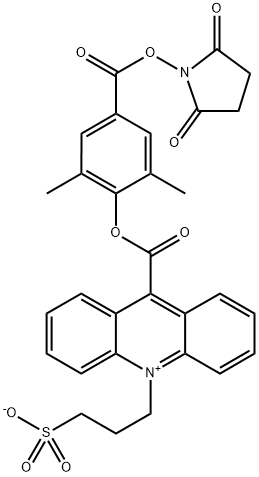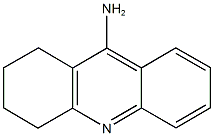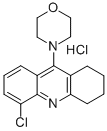9-Amino-1,2,3,4-tetrahydroacridine hydrochloride hydrate , ≥99% , 1684-40-8
Synonym(s):
9-Amino-1,2,3,4-tetrahydroacridine hydrochloride;Tacrine hydrochloride
CAS NO.:1684-40-8
Empirical Formula: C13H15ClN2
Molecular Weight: 234.72
MDL number: MFCD00012657
EINECS: 216-867-5
| Pack Size | Price | Stock | Quantity |
| 1G | RMB279.20 | In Stock |
|
| 5G | RMB943.20 | In Stock |
|
| others | Enquire |
PRODUCT Properties
| Melting point: | 280-284 °C(lit.) |
| storage temp. | Inert atmosphere,2-8°C |
| solubility | Soluble in aqueous buffers |
| pka | pKa 9.8 (Uncertain) |
| form | Crystalline solid |
| color | White to light yellow |
| CAS DataBase Reference | 1684-40-8(CAS DataBase Reference) |
| EPA Substance Registry System | Tacrine hydrochloride (1684-40-8) |
Description and Uses
Tacrine is the first therapeutic launched specifically for the treatment of Alzheimer's disease which affects four million people in the US alone. Clinically significant improvement in cognition has been demonstrated in the patients with Alzheimer's disease. Although the cause of Alzheimer's disease is not understood, degeneration of cholinergic neurons is thought to be a primary factor in the development and progression of the disease. Tacrine is a reversible acetylcholinesterase inhibitor that presumably acts centrally by elevating the acetylcholine level in the cerebral cortex and by slowing degradation of acetylcholine from intact cholinergic neurons. While tacrine improves the symptoms of Alzheimer's disease, the underlining cause of the dementing process is not altered. It has also been suggested that the beneficial effects of tacrine may be due to its multiple effects on several neurotransmitter systems.
A potent centrally acting anticholinesterase, for therapy of memory deficits in patients with Alzheimers disease. THA also selectively blocks potassium channels in the central nervous system, which results in an increased release of acetylcholi
Safety
| Symbol(GHS) |  GHS06 |
| Signal word | Danger |
| Hazard statements | H302-H331-H301-H315-H319-H335 |
| Precautionary statements | P305+P351+P338-P261-P280a-P304+P340-P405-P501a |
| Hazard Codes | T,Xn |
| Risk Statements | 25-36/37/38-20/22 |
| Safety Statements | 26-36-45 |
| RIDADR | UN 2811 6.1/PG 3 |
| WGK Germany | 3 |
| RTECS | AR9532500 |
| HazardClass | 6.1(a) |
| PackingGroup | II |
| Toxicity | LD50 intravenous in mouse: 5600ug/kg |





